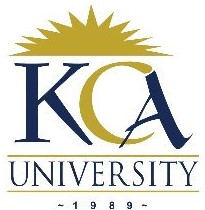
UNIVERSITY EXAMINATIONS: 2017/2018
EXAMINATION FOR THE DEGREE OF BACHELOR OF BUSINESS IN
INFORMATION TECHNOLOGY
BBIT209 DECISION SUPPORT SYSTEMS
FULL TIME/PART TIME/DISTANCE LEARNING
DATE: APRIL, 2018 TIME: 2 HOURS
INSTRUCTIONS: Answer Question One & ANY OTHER TWO questions.
QUESTION ONE
a) Simon’s Model of the decision making process has several fundamental stages. List these with a
brief summary of each stage. Which is, in your opinion, the most important stage?
(4 Marks)
b) Distinguish between data-directed and goal-directed analysis in rule-based systems. Which is preferred
for medical diagnostic systems and why? (4 Marks)
c) Using relevant examples differentiate between the following decision theories :descriptive,
prescriptive and normative (6Marks)
d) Using examples discuss the following decision making theories (6 Marks)
i) Prospect Theory
ii) Expected Utility
iii) Bayesian
e) Describe two examples of intelligent algorithms that can be used in DSS (4 Marks)
f) Describe the advantages and disadvantages of end user developed DSS (4 Marks)
g) Identify the components of a Decision Support Systems (2 Marks)
QUESTION TWO
a) Sunny Bakery is a small grocery store, provides customers’ need and concerned with the
financial- viability of the store. Bread is one of their major daily products. Their problem is to
determine how much bread to stock each day. They decide to explore a few possible
approaches to solve the problem
i) Describe possible approaches to solve this problem (6 Marks)
ii) Design a modeling solution using any technique you have learnt in class to help them solve the
problem (8 Marks)
b) Using relevant examples identify the three conditions under which a manager has to make
decisions (6 Marks)
QUESTION THREE
a) Clothes Entreprise is a leading clothing with over 100 departmental stores in Kenya. The departmental
stores have to reconsider the best way to secure and maintain a competitive advantage. With
increasing competition, they are planning on using a sophisticated decision support system. The
existing system in the company handles large amounts of data, however, inadequate data access and
analysis capabilities prevented managers from exploiting the wealth of information buried in their
business transaction. Explain THREE (3) decision situations which can be supported by the new
decision support system. (6 Marks)
b) Define the relationship between business intelligence and DSS (4Marks )
c) “Proper application of decision making tools increase productivity, efficiency and effectiveness
leading to competitive advantage. “ Justify (10 Marks)
QUESTION FOUR
Ms Bilda owner of three departmental stores situated in different locations has employed you as
management consultant for computerization. The turnover of the stores are very high and she is expecting
a substantial benefit out of the implementation of Information technology
Prepare a report for Management approval and implementation with following details.
i) Step-by-step approach for implementing decision support system (6 Marks)
ii) Expected improvements in services to customers (4 Marks)
iii) Cost economics of the system (5 Marks)
iv) Difficulties in implementing decision support system. (5 Marks)
QUESTION FIVE
A furniture company is producing and selling several products for gross sales (income) of 2.25 million
shillings. Returns and allowances are 4 percent of gross sales, reducing the income to net sales. Marketing,
management, and general expenses (MM&G) are figured to be 18% of the net sales. Cost of goods sold is
the sum of labor (14% of sales), materials (23% of sales) and overhead. Overhead is figured to be variable
overhead (28% of the combined cost of labor and materials) plus fixed overhead (kshs 80,000).
Gross profit is the difference between net sales and cost of goods sold. To figure the profit before tax,
MM&G expenses need to be subtracted from the gross profit. Finally, there is the 27% VAT and 8%
withholding taxes that need to be considered, but these are only assessed if there is indeed a profit; if the
profit before tax is zero or below (a loss from operations), the tax is zero
a) Generate a table showing a 5% monthly increase in gross sales over a period of five months
(8 Marks)
b) What will be the profit after tax if gross sales decline to shs2.0 million? (4 Marks)
c) Assume that the VAT rate is 40% and gross sales total shs3,000,000, what would the change be in
net income? (4 Marks)
d) What is the change in net income resulting from a plan that would reduce the materials cost
fraction to 20% per year but would increase labor costs to 16%? (4 Marks)
